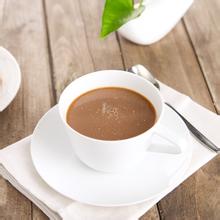Introduction to the characteristics and taste of the varieties produced by the method of grinding degree of Ye Jia Xuefei Adoto coffee
In February 1977, Lieutenant Colonel Mengistu Haile Mariam launched a military coup and became chairman of the Provisional Military Administrative Council and head of state. In 1979, the "Ethiopian Working People's Party Organizational Committee" was established with military personnel as the main body, and a one-party system was implemented. In 1984, the "Ethiopian Workers 'Party" was formed according to the Soviet Communist Party model. In September 1987, Mengistu announced the dissolution of the Provisional Military Administrative Council, the end of military rule, the establishment of the People's Democratic Republic of Ethiopia, and the establishment of a new parliament, Mengistu as president and head of government.
In March 1988, the rebel Eritrea People's Liberation Front (EPLF) and Tigray People's Liberation Front (TPLF) launched an attack on government forces, and a large-scale civil war broke out. In 1989, the "Eritrea People's Liberation Front" occupied most of Eritrea. On May 28, 1991, the EPRF army dominated by the "Tigray People's Liberation Front" entered Addis Ababa, and the Mengistu regime was declared collapsed.
Yegashefi is a small town with an altitude of 1,200 ~ 2,100 meters. It is also synonymous with Ethiopian fine beans. This is a wetland since ancient times. The old saying "yega" means "settle down" and "snow" means "wetland", so "yega snow" means "let us settle down in this wetland".
Strictly speaking, Yejia Shefei is a subsidiary production area of West Damo. This town is located in the northwest of West Damo, surrounded by mountains and lakes, and is one of the coffee producing areas with the highest average altitude in Egypt. However, the production method and flavor here are so prominent that Egyptian coffee farmers compete to be proud of their own coffee with Yejia Shefi flavor, so they are independent from West Damo and become the most famous producing area in Africa.
At first, the coffee trees in Yegashefi were planted by European monks (somewhat similar to Belgian monks who cultivated wheat to brew beer), but later by farmers or cooperatives. Yegashefi is actually formed by surrounding coffee communities or cooperatives, including Idido, Hafusa, Hama and Bdon near Fog Valley.
Most coffee beans are washed, but a small number of absolute crystal beans are deliberately solarized to enhance the attractive fruity flavor and body. These mountain villages are misty, spring all the year round, breezy in summer, cool but not hot, rainy but not damp, and cold in winter, giving birth to unique citrus and floral "regional flavor". Coffee called F trees are mostly planted in farmers 'own backyard or mixed with other crops in the farmland. The yield per household is not much. It is a typical pastoral coffee. Almost all of Yejia Xuefei's award-winning beans come from the above-mentioned coffee villages and communities.
The so-called "yega-sherry" refers to intense jasmine, lemon or lime acid aromas, as well as peach, almond and tea aromas. The author's taste experience is only one sentence: "Coffee entrance, flowers bloom!" The field is like a flower that touches the taste buds and nasal olfactory cells. In addition to the floral fragrance, the delicate body is like silk, and the touch is wonderful. Many coffee chemists have begun to study the microclimate and soil conditions surrounding Yekashefi in order to derive the growing equation for fine coffee.

Important Notice :
前街咖啡 FrontStreet Coffee has moved to new addredd:
FrontStreet Coffee Address: 315,Donghua East Road,GuangZhou
Tel:020 38364473
- Prev

Yerga Shefi Woka Coffee Flavor Description Processing Characteristics Variety Taste Introduction
Yerga Sherfi has always enjoyed a reputation in the eyes of coffee connoisseurs around the world. Rare washed high-quality Arabica native coffee, suitable for a wide range of roasting degrees, perfectly presents fresh and bright floral aromas, beautiful and complete bean types, and is a high-end coffee that ordinary mocha cannot match. This coffee has a unique aroma, showing citrus, orange fruit, syrup, balanced acid, aroma
- Next

Flavor description treatment of Rosa Coffee introduction to the taste of high-quality coffee beans in producing areas
Rosa coffee raw beans have a very beautiful blue-green, jade-like warm texture, smell fresh grass, peach, berry flavor and oolong tea unique milk sweet flavor that most coffee beans do not have, it seems that aroma and taste of this kind of things need to cooperate with association, but the light smell of tea is we can obviously feel the roasted cooked beans, it looks like there will be some wrinkles
Related
- Detailed explanation of Jadeite planting Land in Panamanian Jadeite Manor introduction to the grading system of Jadeite competitive bidding, Red bid, Green bid and Rose Summer
- Story of Coffee planting in Brenka region of Costa Rica Stonehenge Manor anaerobic heavy honey treatment of flavor mouth
- What's on the barrel of Blue Mountain Coffee beans?
- Can American coffee also pull flowers? How to use hot American style to pull out a good-looking pattern?
- Can you make a cold extract with coffee beans? What is the right proportion for cold-extracted coffee formula?
- Indonesian PWN Gold Mandrine Coffee Origin Features Flavor How to Chong? Mandolin coffee is American.
- A brief introduction to the flavor characteristics of Brazilian yellow bourbon coffee beans
- What is the effect of different water quality on the flavor of cold-extracted coffee? What kind of water is best for brewing coffee?
- Why do you think of Rose Summer whenever you mention Panamanian coffee?
- Introduction to the characteristics of authentic blue mountain coffee bean producing areas? What is the CIB Coffee Authority in Jamaica?

